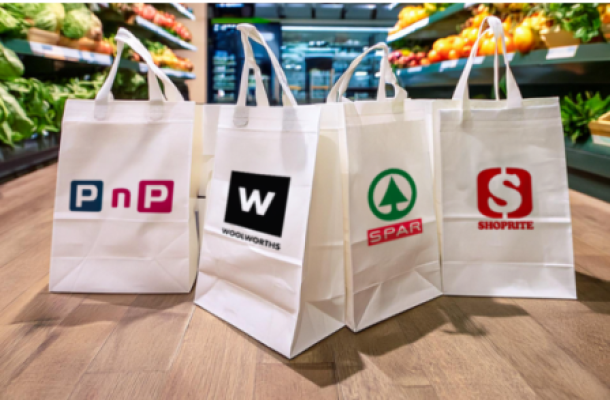Amid change, marketers should focus on the fundamentals
Most brands and marketers are aware that traditional marketing and engagement strategies will no longer generate the success they did just a few years ago. But many have yet to carve a path toward growth amid an increasingly digitized market where choice is overly abundant and every smartphone is a sales register.
While the winds of change were affecting the fast-moving consumer goods (FMCG) and grocery sectors well before Amazon’s recently announced plans to purchase Whole Foods Market, the acquisition highlights just how profoundly consumer expectations regarding food and beverage shopping are changing—and will continue to do so.
That change, however, is something that industry leaders speaking at Nielsen’s CoNEXTionsevent in Los Angeles this week encouraged brands to get in front of now. While speaking with Steve Hasker, Nielsen’s global president and chief operating officer, Marc Lore, president and CEO of Walmart E-commerce (and founder of Jet.com), stressed how keeping things simple has enabled his organization to stay focused and growing. In fact, that focus helped lead to 63% e-commerce growth in Q1 in Walmart’s U.S. business.
“Right now, we’re really focused on fundamentals,” Lore said. “It really just comes down to focusing on what customers want.” And to that end, he says his mission is staying dialed into five simple questions and making sure his operation is equipped to deliver on all of them. “If you can do all five of these things, you’re all set. It’s not that complicated.”

Lore also stressed the need for businesses to have a clear vision and then drive to execute on it without being distracted by what others are doing.
“It’s dangerous to be influenced by what others do,” he said when asked about the Amazon-Whole Foods news. “The key is really about finding your North Star and going after it.”
And while much of the industry focuses on the newness of e-commerce and digital enablement, Lore has a different perspective. In fact, he doesn’t see e-commerce as the step change of logistics, largely because brands have been shipping products to people for decades through catalogs. Rather, it’s merchandising that has changed, allowing brands to build massive online stores with rich product descriptions and the promise of speedy delivery.
Despite the hype over the e-potential of the Amazon-Whole Foods merger, brick-and-mortar continue to drive 94% of UPC-coded sales in the U.S. But unlike in the past, when the traditional tailwinds propelled offline growth, industry leaders at CoNEXTions stressed the importance of digital enablement for complete omni-channel strategies.
“Most retailers are still underestimating Amazon, and most investors are underestimating Walmart,” said Cyriac Roeding, entrepreneur, investor and co-founder of shopping rewards app Shopkick. In fact, he says that he bought Walmart stock on the day Amazon announced its plans to buy Whole Foods.
“The industry started talking about digital as its own group,” said Steve Henig, vice president of digital commerce and analytics at Wakefern. “Starting to consider digital assets as another, yet integrated, communication tool is a better way to think about it. Digital gives us a way to see what consumers want and build loyalty and the in-store experience. Now, with digital, we have the tools to address what consumers want.”
When it comes to what consumers want, however, Roeding said he sees bifurcation. “On one hand, they want things fast, while on the other hand they want a mini-vacation when they go shopping. So they want a great streamlined digital experience and something innovative when they go to the store. So picture today’s store: Is that a mini vacation?”
This is where emerging technology comes into play, and Joanne Harris, vice president of North America sales for Procter & Gamble, believes machine learning is going to play a huge role in delivering on customer demand in ways that will dramatically personalize commerce. And because there will always be choice, Harris says brands need to deliver on their promises while continually striving to grow categories.
Machine learning is something that Walmart’s Lore believes will be hugely influential in what he refers to as “conversational commerce.” In fact, he says data and artificial intelligence will be critical in creating personalized experiences amid an ever-growing inventory of product and choice.
“If you search online for TVs, you get a long list of products,” he says. “With machine learning, that search becomes very personal depending on who’s doing the searching.”
In addition to being out in front with respect to technology, Lore stresses that brands seeking to succeed in the future will be open, transparent and “playing for where the puck will be” instead of where it is today. “It’s not about thinking for what’s happening now. It’s all about thinking for what’s going to be happening in 10 years.”
News Category
- International retailers
- On the move
- Awards and achievements
- Legislation
- Wine and liquor
- Africa
- Going green
- Supplier news
- Research tools
- Retailer trading results
- Supply chain
- Innovation and technology
- Economic factors
- Crime and security
- Store Openings
- Marketing and Promotions
- Social Responsibility
- Brand Press Office
Related Articles

Checkers Sixty60 wipes floor with Pick n Pay As...

Top tips for consumers to combat escalating ele...

Clear winner in South African retail battle

Drinks survey reveals Rooibos as a top choice a...


